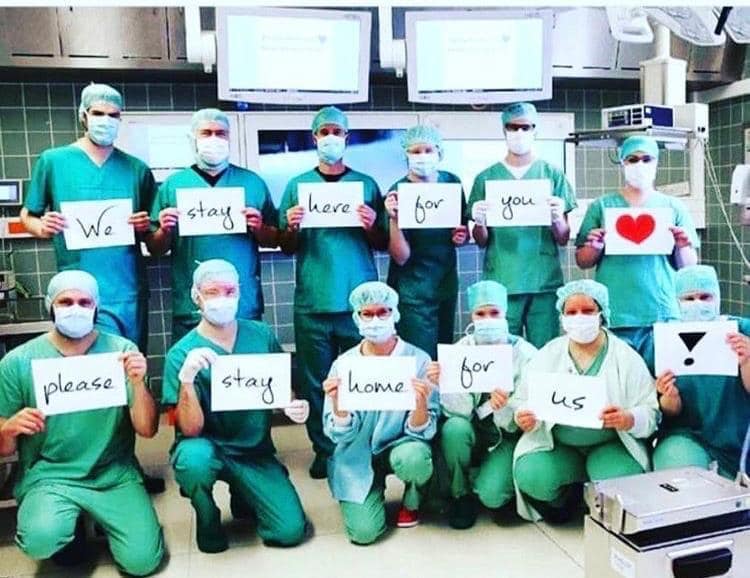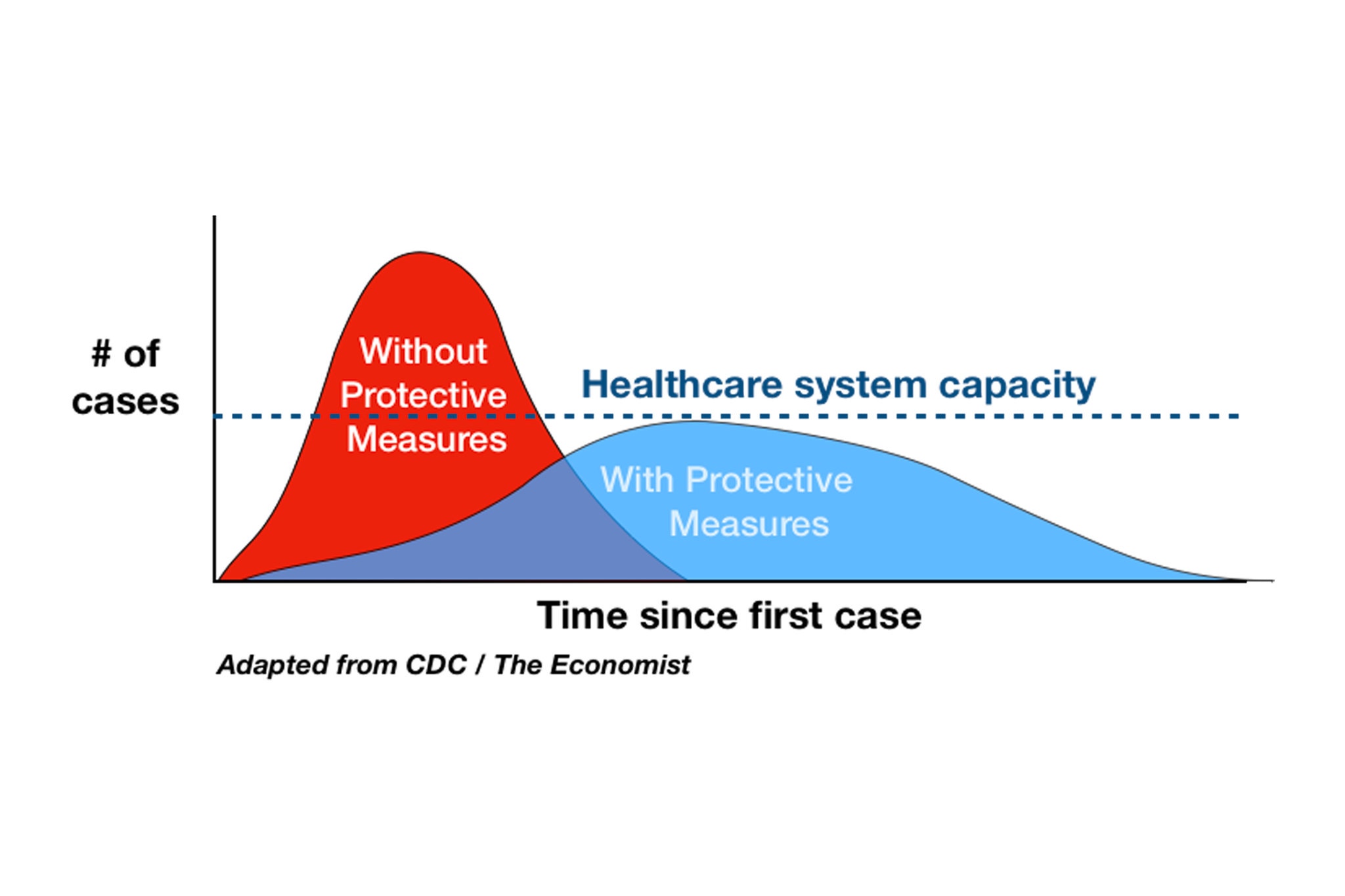
Passages in bold in the body of the texts below are usually my emphasis, though not always. This is an ongoing project, and I update the site frequently during the day. Because I try to stay focused on what has actually happened, I usually let the news ‘settle’ for a day or so before posting. I hope readers will peruse the articles in full for a better understanding of the issues and their context; our democracy and our future depend on citizens who can distinguish between facts and falsehoods and who are engaged in the political process.
For independent global news, visit Democracy Now!
Friday, 27 March 2020, Day 1,162:
Trump Signs $2 Trillion Coronavirus Stimulus Bill, The New York Times, Emily Cochrane and Sheryl Gay Stolberg, Friday 27 March 2020: “President Trump on Friday signed a sweeping $2 trillion measure to respond to the coronavirus pandemic, but not before a late objection from a lone rank-and-file Republican forced hundreds of lawmakers to rush back to the capital even as the virus continued to spread through their ranks. The move by Representative Thomas Massie, Republican of Kentucky, accomplished an extraordinary feat, uniting President Trump and John Kerry, the former Democratic secretary of state and presidential candidate, in a bipartisan moment of outrage against a lawmaker who wanted to force the whole House to take a formal roll-call vote. House Democrats and Republicans teamed up to bring just enough lawmakers back to the Capitol to thwart Mr. Massie’s tactic, and the measure passed on a voice vote. It was a resounding show of support for a bill that lawmakers in both parties said was imperfect, but essential to address a national public health and economic crisis…. While the legislation was the product of a compromise among Republicans, Democrats and the administration, Mr. Trump did not invite any Democrats to the White House to celebrate its enactment, as is typical…. In weeks, it will send direct payments of $1,200 to individuals earning up to $75,000, with smaller payments to those with incomes of up to $99,000 and an additional $500 per child. It will substantially expand jobless aid, providing an additional 13 weeks and a four-month enhancement of benefits — including an extra $600 per week — and extend it to freelancers and gig workers. The package also suspends all federal student loan payments for six months through September, and the loans will not accrue interest during that period…. The law creates disclosure requirements, an inspector general and a congressionally mandated board to monitor a $425 billion bailout fund to be administered by the Federal Reserve. It also bars companies that receive government infusions from doing stock buybacks for as long as they are benefiting from federal aid, in addition to a year afterward. Companies owned by Mr. Trump and members of his family are barred from receiving any of the bailout money, although the president’s real estate company could potentially benefit from other aspects of the stimulus law…. About two hours after Mr. Trump signed the legislation, however, the White House issued a signing statement undermining a crucial safeguard Democrats had demanded as a condition of agreeing to the corporate bailout fund. The law empowers the inspector general to request information from executive branch agencies and requires the official to report any unreasonable refusal to Congress ‘without delay.’ But Mr. Trump suggested his constitutional powers permit him to decide what information to share with lawmakers.” See also, Trump signs $2 trillion coronavirus bill into law as companies and households brace for more economic pain, The Washington Post, Erica Werner, Paul Kane, and Mike DeBonis, Friday, 27 March 2020: “President Trump on Friday signed a massive $2 trillion emergency spending bill into law, promising to deliver a tidal wave of cash to individual Americans, businesses and health care facilities all reeling from the coronavirus pandemic. His signature came just hours after the House of Representatives passed the massive package by an overwhelming voice vote, and less than 48 hours after it received unanimous approval from the Senate…. But tensions between the White House and Congress over how the law will be implemented became immediately apparent. In a signing statement, Trump wrote that he would not permit a new inspector general to issue certain reports to Congress ‘without presidential supervision.’ Democrats insisted on the creation of the new inspector general in order to make sure the White House didn’t improperly disburse taxpayer money.” See also, Trump Suggests He Can Gag the Inspector General for Stimulus Bailout Program, The New York Times, Charlie Savage, Friday, 27 March 2020: “When President Trump signed the $2 trillion economic stabilization package on Friday to respond to the coronavirus pandemic, he undercut a crucial safeguard that Democrats insisted upon as a condition of agreeing to include a $500 billion corporate bailout fund. In a signing statement released hours after Mr. Trump signed the bill in a televised ceremony in the Oval Office, the president suggested he had the power to decide what information a newly created inspector general intended to monitor the fund could share with Congress. Under the law, the inspector general, when auditing loans and investments made through the fund, has the power to demand information from the Treasury Department and other executive branch agencies. The law requires reporting to Congress ‘without delay’ if any agency balks and its refusal is unreasonable ‘in the judgment of the special inspector general.’ Democrats blocked a final agreement on the package this week as they insisted on stronger oversight provisions to ensure that the president and Treasury Secretary Steven Mnuchin could not abuse the bailout fund. They feared that Mr. Trump, who has previously stonewalled congressional oversight, would do the same when it came to the corporate aid program. But in his statement, which the White House made public about two hours after the president signed the bill, Mr. Trump suggested that under his own understanding of his constitutional powers as president, he can gag the special inspector general for pandemic recovery, known by the acronym S.I.G.P.R., and keep information from Congress.” See also, John Kerry says Republican Representative Thomas Massie ‘tested positive for being an asshole,’ New York Daily News, Brian Niemietz, Friday, 27 March 2020: “Former Secretary of State John Kerry and President Trump finally agree on something —Kentucky Congressman Thomas Massie has to go. The Republican representative was the sole vote against a $2.2 trillion coronavirus stimulus bill that would help people in need during a deadly and rapidly spreading pandemic. Many of Massie’s fellow congressmen and women were forced to return to Washington, D.C., for a vote, despite travel and congregating in groups being very dangerous right now. ‘Breaking news: Congressman Masse has tested positive for for being an asshole,’ Kerry tweeted. ‘He must be quarantined to prevent the spread of his massive stupidity.'” See also, House passes $2 trillion coronavirus package, but not without last-minute drama, Politico, Heather Caygle and Sarah Ferris, Friday, 27 March 2020. See also, Trump signs historic $2 trillion stimulus after Congress passes it Friday, CNN Politics, Clare Foran, Manu Raju, Haley Byrd, and Ted Barrett, Friday, 27 March 2020. See also, Trump signs $2.2 trillion coronavirus stimulus package into law, The Guardian, Lauren Gambino, Friday, 27 March 2020. See also, Inside the talks on the largest U.S. bailout: frantic negotiations, partisan tensions and a Trump tweet, The Washington Post, Seung Min Kim, Mike DeBonis, Erica Werner, and Paul Kane, Friday, 27 March 2020. See also, The Mega-Bailout Leaves 4 Mega-Questions. Democrats decided to play ball to get what they wanted on policy. But how are all those ideas going to work? Politico, Michael Grunwald, published on Saturday, 28 March 2020.
Some significant developments in the coronavirus pandemic on Friday, 27 March 2020: U.S. becomes first country to report 100,000 confirmed coronavirus cases; Trump invokes Defense Production Act, The Washington Post, Marisa Iati, Katie Mettler, Siobhán O’Grady, Hannah Knowles, Samantha Pell, Meryl Kornfield, and Colby Itkowitz, Friday, 27 March 2020: “The United States, which recorded its first confirmed case two months ago, now has more than 100,000 confirmed cases of the novel coronavirus, as reported by states’ health departments. The nation passed 10,000 cases on March 19 and on Thursday became the country with the most confirmed cases. Shortly after signing a sweeping $2 trillion coronavirus spending package into law, President Trump moved to curb oversight provisions in the legislation and assert presidential authority over a new inspector general’s office created to monitor the disbursement of loans. The decision could set up a momentous battle between the White House and Congress as the administration implements the new law.”
Here are some significant developments:
- President Trump invoked the Defense Production Act on Friday to force General Motors to manufacture ventilators. U.S. cities have reported acute shortages of masks, test kits and ventilators.
- Trump also signed the $2 trillion emergency spending bill, which the House passed on Friday, to combat the economic effects of the pandemic.
- Italy reported 919 coronavirus deaths in one day — the largest single-day toll reported by any country. The known death toll from the coronavirus has surpassed 25,000 globally.
- British Prime Minister Boris Johnson has tested positive for the virus and is self-isolating but will continue to be active in governing.
- The New York City area is the current U.S. epicenter, but the number of confirmed cases is beginning to surge elsewhere. “We also see hot spots like Detroit, like Chicago, like New Orleans, will have a worse week next week,” the surgeon general said Friday.
- A Washington Post-ABC News poll finds that 9 in 10 Americans are staying home “as much as possible” and practicing social distancing to lessen the risk of becoming infected.
Many other significant developments are included in this article.
Coronavirus Updates: Trump Signs #2 Trillion Bill as U.S. Virus Cases Pass 100,000, The New York Times, Friday, 27 March 2020: “President Trump, who had questioned the need for additional ventilators, pushed industry to make more. A new survey of mayors found dire shortages of urgently needed supplies.
- There are now 100,000 known coronavirus cases in the United States.
- Trump attacks Democratic governors. Biden says: ‘Stop personalizing everything.’
- Trump signs $2 trillion stimulus plan, clearing way for checks for Americans.
- Coronavirus cases now threaten America’s middle.
- U.S. cities face shortages of masks, ventilators and emergency gear.
- Millions of Americans are feeling the shock of unemployment.
- After expressing doubts about the need for more ventilators, Trump pushes industry to make more.
Many other significant developments are covered in this article.
Continue reading Week 167, Friday, 27 March – Thursday, 2 April 2020 (Days 1,162-1,168) [Read more…]



